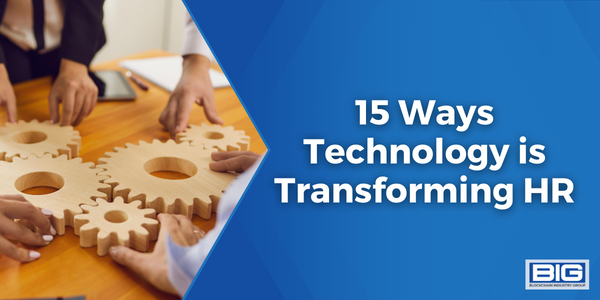
The human resources (HR) profession is undergoing significant changes as technology continues to advance at a rapid pace. From automating routine tasks to enabling remote work, future technologies are transforming the way HR professionals do their jobs in a number of ways. Here are 15 ways that technology is transforming the HR profession:
- Automation and artificial intelligence (AI): As AI technologies become more advanced, it is likely that many HR tasks, such as resume screening and benefits enrollment, will be automated. This will allow HR professionals to focus on more strategic tasks, but it also raises important questions about the future of work.
- Virtual and remote work: The proliferation of video conferencing and other collaboration tools is making it easier for HR professionals to work remotely and manage teams that are dispersed across different locations. This trend is likely to continue in the future, as more and more companies embrace the benefits of remote work.
- Data privacy and security: The increasing reliance on technology in HR also raises important questions about data privacy and security. As HR departments collect and store more and more sensitive employee data, it is critical that they have robust systems in place to protect that data.
- Recruitment: Technology is changing the way HR professionals recruit and hire new employees. For example, AI-powered tools can be used to scan resumes and conduct initial interviews with candidates, freeing up HR professionals to focus on more complex tasks. Social media platforms such as LinkedIn can also be used to connect with potential candidates and identify top talent.
- Performance management: HR departments are using technology to streamline the performance review process and track employee performance in real-time. For example, some companies are using performance tracking software to set and track employee goals, provide feedback, and measure progress.
- Learning and development: Technology is also making it easier for HR professionals to offer training and development opportunities to their employees. Online learning platforms and webinars can be used to provide employees with access to training materials and expert speakers, regardless of their location.
- Employee engagement: HR professionals are using technology to connect with employees and improve engagement. For example, some companies are using chatbot-powered employee portals to provide employees with access to information and resources, while others are using social media to create virtual communities where employees can connect and collaborate.
- Compensation and benefits: Technology is also changing the way HR professionals manage employee compensation and benefits. For example, some companies are using AI-powered tools to analyze pay data and ensure that employee compensation is fair and aligned with industry standards. HR professionals can also use technology to automate the benefits enrollment process and make it easier for employees to access and manage their benefits.
- Diversity and inclusion: HR professionals are using technology to promote diversity and inclusion in the workplace. For example, some companies are using AI-powered tools to identify bias in job descriptions and other HR materials, while others are using virtual reality training to help employees understand the experiences of people from different backgrounds.
- Employee health and well-being: Technology is changing the way HR professionals support the health and well-being of their employees. For example, some companies are using wearables and other technologies to track employee fitness and provide personalized health recommendations, while others are using virtual mental health resources to support employees who are struggling with stress and other mental health issues.
- Onboarding: Technology is making it easier for HR professionals to onboard new employees. For example, some companies are using digital onboarding platforms to provide new hires with access to training materials and other resources, while others are using virtual reality to provide a immersive orientation experience.
- Talent management: HR professionals are using technology to identify and develop top talent within their organizations. For example, some companies are using data analytics to identify high-potential employees and tailor their development plans accordingly, while others are using gamification to create fun and engaging learning experiences.
- Employee retention: Technology is also changing the way HR professionals approach employee retention. For example, some companies are using data analytics to identify the factors that contribute to employee turnover and implement strategies to address those issues. Others are using social media and other digital platforms to create a sense of community and connection among employees.
- Employee advocacy: HR professionals are using technology to help employees become advocates for their organizations. For example, some companies are using social media platforms to give employees the tools and resources they need to share company news and information with their networks. Others are using employee advocacy software to help employees create and share content that promotes their company’s brand and values.
- Global HR: Finally, technology is making it easier for HR professionals to manage and support employees across different locations and time zones. For example, some companies are using cloud-based HR systems to provide employees with access to information and resources no matter where they are, while others are using virtual meeting platforms to facilitate cross-border collaboration.
Top 10 Hidden Gem Recruiting Bloggers
—
Top 10 HR Predictions for the Future of Work
—
Top 10 Schools with Hidden Gem Human Resources Programs
—
Explore More HR & Recruiting Blogs



